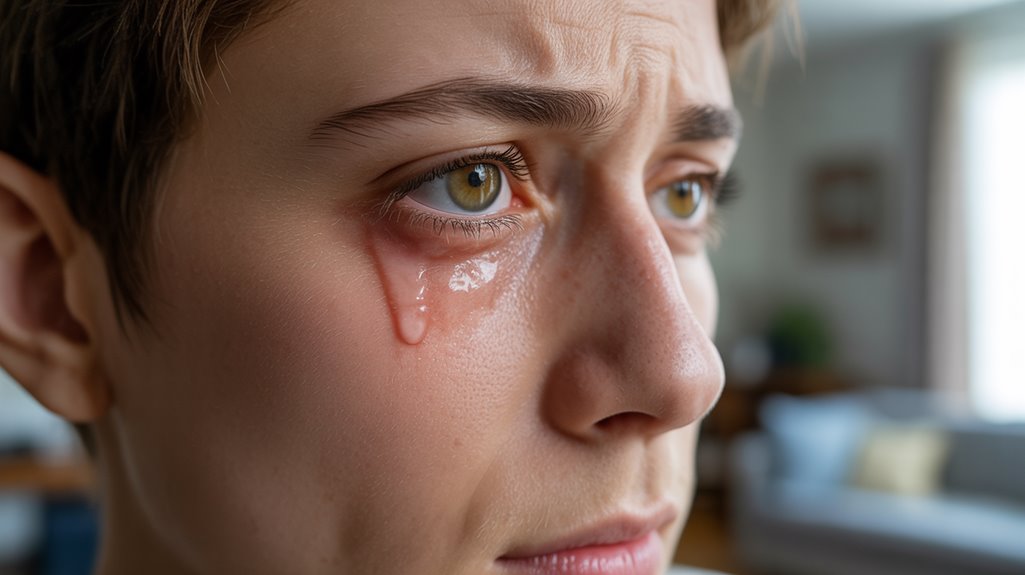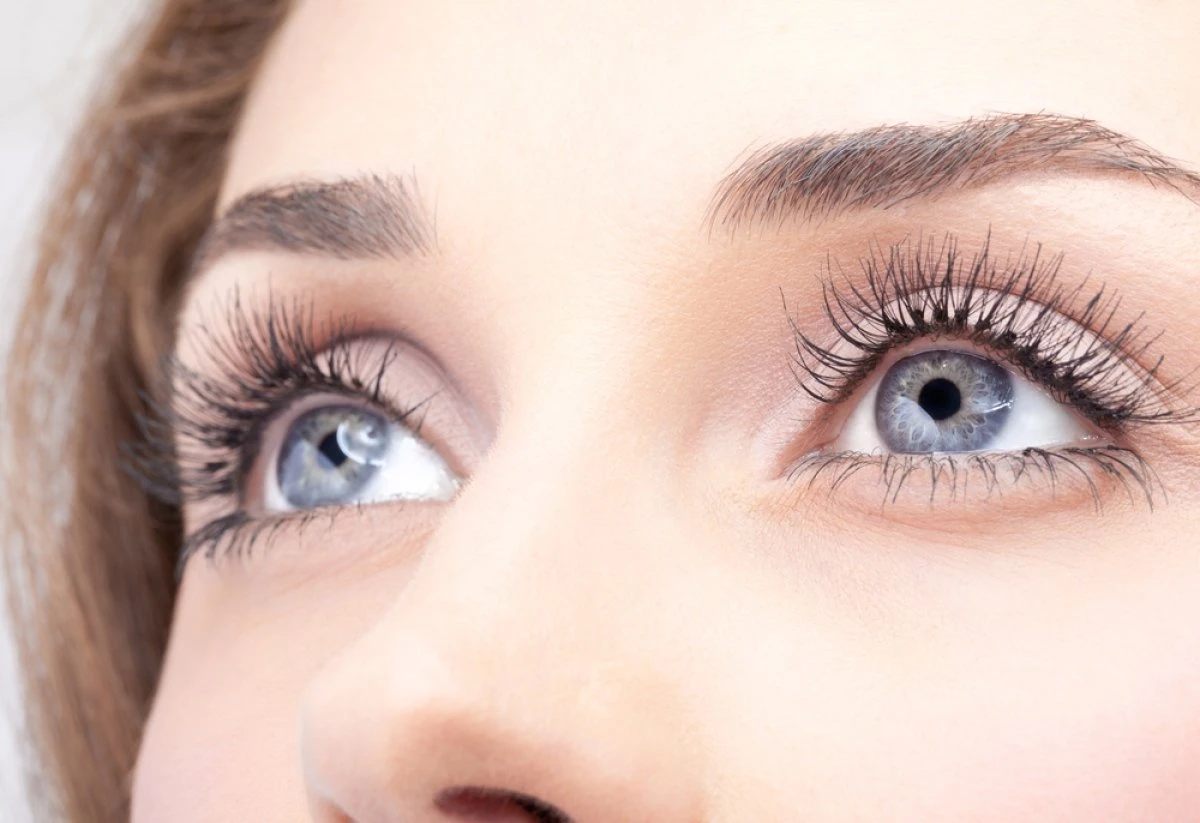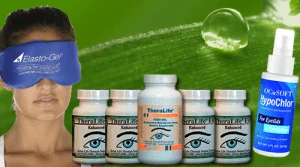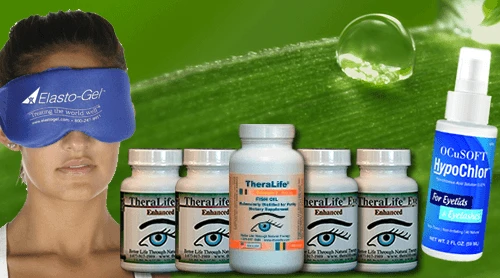If you’re experiencing watery eyes and a swollen eyelid, Theralife offers a unique, oral eye treatment that can help address these symptoms effectively. Unlike other solutions that rely solely on topical treatments, Theralife provides an internal approach to eye care, making it the only company to offer such an innovative solution. Their products are designed to alleviate conditions like allergies, conjunctivitis, styes, blocked tear ducts, and irritant reactions, all of which can cause eyelid edema and excessive tearing.
Theralife’s comprehensive approach targets the root causes of eye discomfort, ensuring better tear production and improved eye health. By supporting the body’s natural processes, Theralife enhances eye function and provides relief from symptoms associated with minor injuries, eyelid margin disease, or gland dysfunction. To explore more about the causes, symptoms, and management strategies, along with how Theralife’s products can benefit you, visit their website and discover the difference their oral treatments can make.
Powerful Oral Treatment for Watery Eyes – From Inside Out
Add To Cart
Key Takeaways
- Allergies and environmental irritants can trigger inflammation, leading to watery eyes and swollen eyelids due to histamine release.
- Infections like viral or bacterial conjunctivitis cause redness, discharge, tearing, and eyelid swelling.
- Blocked tear ducts prevent normal tear drainage, resulting in excessive tearing and eyelid puffiness.
- Eyelid inflammation from blepharitis or Meibomian gland dysfunction often causes swelling, crusting, and increased tearing.
- Eye injuries or foreign bodies may irritate ocular tissues, provoking swelling and reflex tearing as protective responses.
Allergies and Environmental Irritants

Although allergies and environmental irritants are common triggers, they cause watery eyes and swollen eyelids through distinct immunologic mechanisms.
When you’re exposed to allergens such as pollen, your immune system mounts a hypersensitivity response. Mast cells in the conjunctiva release histamine and other mediators, resulting in vasodilation, increased vascular permeability, and subsequent eyelid edema and excessive tear production.
In contrast, environmental irritants like smoke irritation provoke a non-immunologic inflammatory reaction. Chemical particulates disrupt the ocular surface, activating sensory nerve endings and promoting reflex tearing, as well as mild, localized swelling.
Both pathways compromise the protective barrier of the eye, increasing susceptibility to further irritation. Protective eyewear, such as wrap-around outdoor glasses, can reduce tearing and discomfort by shielding the eyes from environmental irritants like wind and allergens.
Prompt recognition of pollen exposure or smoke irritation as causative factors is essential for effective management and prevention of recurrent symptoms.
Infections: Conjunctivitis and Styes
You may experience conjunctivitis, characterized by hyperemia, discharge, and increased tearing, often caused by viral or bacterial pathogens. Styes present as localized, painful eyelid swellings due to acute infection of the sebaceous glands, most commonly Staphylococcus aureus. To effectively manage styes and blepharitis, warm compresses and proper eyelid hygiene are recommended. Prompt identification and evidence-based management are essential to reduce complications and promote resolution.
Conjunctivitis Symptoms and Causes
When pathogens such as viruses or bacteria infect the conjunctiva, conjunctivitis develops, presenting with hallmark symptoms including ocular redness, watery discharge, irritation, and eyelid swelling.
You’ll often notice viral conjunctivitis producing a thin, watery secretion, frequently accompanied by a gritty sensation and pronounced photophobia. This variant is highly contagious and commonly associated with upper respiratory tract infections.
In contrast, bacterial conjunctivitis typically causes a thicker, mucopurulent discharge and may present with matting of the eyelids, especially upon waking. The eyelid swelling in bacterial cases can be more pronounced due to the robust inflammatory response.
Both forms result in conjunctival hyperemia and chemosis, but the nature of the discharge and systemic associations help differentiate between viral and bacterial origins, guiding appropriate management strategies. Inflammatory cytokines such as IL-1beta and TNF-alpha are induced by hyperosmolar stress, and they play a significant role in the inflammatory responses seen in conjunctivitis, further complicating the condition.
Stye Formation and Treatment
Styes, or hordeolum, arise from acute bacterial infections—most commonly Staphylococcus aureus—of the eyelid’s sebaceous glands, leading to localized erythema, tenderness, and a characteristic swollen, fluctuant nodule at the lid margin.
You’ll typically notice focal pain, lid swelling, and sometimes excessive tearing. Early stye remedies include frequent application of warm compresses, which enhance local blood flow and promote spontaneous drainage.
Avoid manipulating or expressing the lesion, as this increases the risk of secondary infection.
Stye prevention focuses on maintaining eyelid hygiene and minimizing ocular surface contamination—regularly cleansing the eyelids and avoiding eye rubbing are critical measures.
If the stye persists beyond several days, or if preseptal cellulitis is suspected, seek prompt medical evaluation for potential topical or systemic antibiotics.
Avoid squeezing or popping styes as this can lead to the spread of infection and potentially complicate the condition further.
Blocked Tear Ducts
Although tear drainage typically occurs through the nasolacrimal duct, a blockage in this pathway can result in excessive tearing and eyelid swelling.
In normal tear duct anatomy, tears produced by the lacrimal gland drain through small openings called puncta, enter canaliculi, and pass into the nasolacrimal duct, which empties into the nasal cavity.
When any segment of this tear drainage system becomes obstructed—due to congenital defects, inflammation, trauma, or infection—tears accumulate on the ocular surface. This overflow causes epiphora and can provoke reactive swelling of the eyelid.
Persistent eyelid swelling can also be caused by Meibomian gland dysfunction which leads to clogged oil glands.
You may experience localized tenderness, recurrent eye infections, or discharge.
Diagnosis often involves clinical examination and sometimes imaging studies to assess the precise location of the blockage, facilitating targeted management strategies for ideal tear drainage restoration.
Blepharitis and Eyelid Inflammation
You may experience blepharitis as eyelid margin erythema, crusting, and persistent irritation, often accompanied by swollen eyelids. Clinical evidence links triggers such as bacterial colonization, seborrheic dermatitis, and meibomian gland dysfunction to these inflammatory symptoms. Recognizing these factors is essential for targeted management and symptom relief. Consistent treatment regimens are essential for chronic condition management, including allergy management and environmental control strategies.
Common Blepharitis Symptoms
When blepharitis develops, patients typically experience eyelid margin redness, swelling, and a gritty or burning sensation. You might also notice crusting along the lashes, excessive tearing, photophobia, and recurrent episodes of eyelid sticking, especially upon waking.
This condition frequently presents bilaterally and can cause chronic irritation, foreign body sensation, and intermittent blurry vision. Additionally, flaky debris, referred to as collarettes, may accumulate at the base of the eyelashes.
In some cases, meibomian gland dysfunction can lead to frothy tears and further exacerbate ocular surface discomfort. Effective eyelid hygiene, including regular cleansing of the eyelid margins, is essential for symptom control.
Treatment options may also involve topical antibiotics or anti-inflammatory agents, prescribed based on the severity and underlying etiology of your blepharitis.
Triggers of Eyelid Swelling
While numerous factors can precipitate eyelid swelling in blepharitis and related inflammatory conditions, the most common triggers include bacterial colonization of the eyelid margins, sebaceous gland dysfunction, and hypersensitivity reactions to environmental allergens. You may also notice that dietary factors—such as high glycemic load or inadequate omega-3 intake—can exacerbate inflammation, influencing glandular function and tear film stability. Hormonal changes, particularly shifts in androgen or estrogen levels, can alter sebaceous gland secretions, predisposing you to eyelid edema and inflammation. Recognizing these triggers is essential for targeted management and symptom reduction. In addition, clogged oil glands are a common contributing factor to blepharitis, leading to further irritation and swelling.
| Trigger Type | Mechanism | Clinical Implication |
|---|---|---|
| Bacterial Colonization | Inflammatory immune response | Swelling, discharge |
| Sebaceous Dysfunction | Gland obstruction | Lid edema, tear instability |
| Allergens | Hypersensitivity reaction | Redness, swelling |
| Dietary Factors | Pro-inflammatory diet | Exacerbation of swelling |
| Hormonal Changes | Altered glandular secretion | Increased eyelid inflammation |
Eye Injuries and Foreign Bodies
Although the eye is protected by the eyelids and tear film, direct trauma or the entry of foreign bodies can disrupt normal ocular function and trigger symptoms such as watery eyes and eyelid swelling.
When you experience eyelid trauma, the local inflammatory response increases vascular permeability, resulting in edema and excess tear production. Even minor injuries, such as a scratch or blunt force, may compromise the integrity of delicate periocular tissues.
If a foreign object, such as dust, metal, or plant material, becomes lodged under your eyelid or on the ocular surface, it can irritate the conjunctiva and cornea. This irritation stimulates reflex tearing and swelling as your body attempts to flush out the irritant and protect deeper ocular structures from further injury or infection. In cases where swelling is accompanied by fever, light sensitivity, or visual disturbances, it is crucial to seek immediate medical evaluation to ensure timely care and prevent complications.
When to See a Doctor

How do you determine if your symptoms require medical attention? If your watery eye and swollen eyelid persist beyond a few days, worsen, or are accompanied by severe pain, vision changes, or discharge, you should seek prompt evaluation. These signs may indicate an underlying infection, allergic reaction, or other pathology requiring intervention. A clinician will assess your history and perform a detailed ocular examination. Based on findings, they may order diagnostic tests such as slit-lamp examination, tear duct probing, or cultures to identify the etiology. Timely diagnosis is essential, as untreated conditions can lead to complications. Thick green or gray mucus often suggests bacterial infections and should not be ignored. Treatment options vary and can include topical antibiotics for bacterial infections, antihistamines for allergies, or surgical intervention for blocked tear ducts. Don’t delay professional care if symptoms escalate.
Powerful Oral Treatment for Watery Eyes – From Inside Out
Add To Cart
Frequently Asked Questions
Can Diet or Nutrition Affect Eye Swelling and Tearing?
Diet and nutrition can impact eye swelling and tearing.
If you have nutritional deficiencies, such as low vitamin A or omega-3 fatty acids, you might experience impaired tear production and increased risk of inflammation.
Inadequate hydration levels can also reduce tear film stability, leading to excessive tearing or irritation.
Research supports that maintaining balanced nutrition and sufficient hydration optimizes ocular surface health, potentially minimizing swelling and abnormal tearing responses in clinical populations.
Are Watery Eyes and Swollen Eyelids Contagious?
You should know that watery eyes and swollen eyelids aren’t inherently contagious.
However, if viral infections like conjunctivitis cause your symptoms, you can transmit the condition through direct or indirect contact.
In contrast, allergic reactions, another common cause, aren’t contagious since they’re triggered by environmental allergens rather than pathogens.
Evidence indicates that identifying the underlying etiology determines the risk of contagion, so you should seek clinical evaluation for accurate diagnosis and management.
Can Underlying Medical Conditions Cause These Symptoms?
Yes, you can experience watery eyes and a swollen eyelid due to underlying medical conditions.
Allergic reactions frequently trigger these symptoms by causing inflammation and increased tear production.
Chronic conditions such as blepharitis, dry eye syndrome, or autoimmune disorders may also contribute.
Evidence indicates that systemic diseases like thyroid eye disease or infections can manifest similarly.
It’s important to consult a healthcare professional for precise diagnosis and targeted management of these underlying causes.
Do Certain Medications Lead to Watery Eyes and Swelling?
While you might expect relief, not discomfort, medication side effects can paradoxically cause watery eyes and eyelid swelling.
Some allergy medications, especially those containing antihistamines or decongestants, may trigger ocular irritation or hypersensitivity reactions.
Additionally, systemic drugs like antibiotics, glaucoma medications, or even certain chemotherapeutic agents are documented in clinical literature to induce these ocular symptoms.
Always consult your healthcare provider before discontinuing any medication due to adverse effects.
Can Stress or Lack of Sleep Contribute to These Issues?
You should know that stress impact and sleep deprivation can exacerbate ocular surface disturbances.
When you experience stress, your body releases hormones that may alter tear production, leading to irritation.
Sleep deprivation impairs the eye’s ability to repair and maintain a healthy tear film, increasing susceptibility to inflammation and swelling.
Clinical studies support that these factors contribute to symptoms like watery eyes and swollen eyelids, especially when combined with preexisting ocular conditions.
Powerful Oral Treatment for Watery Eyes – From Inside Out
Add To Cart
Conclusion
When experiencing watery eyes and swollen eyelids, it’s crucial to address the underlying causes, which may include allergens, bacterial infections, or blocked tear ducts. TheraLife is a unique provider of oral eye treatment care, offering products designed to alleviate these symptoms and prevent complications such as vision impairment. By focusing on internal healing, TheraLife’s products aim to restore ocular health and ensure clear, comfortable vision. If symptoms like redness, pain, or discharge worsen, seeking TheraLife’s specialized treatment is essential for maintaining eye health.
References
- Arbabi EM, Arshad FA, Holden K, Carrim ZI. The watery eye. BMJ. 2011 Jul 19;343:d4029. – PubMed
- Nemet AY. The Etiology of Epiphora: A Multifactorial Issue. Semin Ophthalmol. 2016;31(3):275-9. – PubMed
- Patel J, Levin A, Patel BC. StatPearls [Internet] StatPearls Publishing; Treasure Island (FL): 2023. Aug 7, Epiphora. – PubMed
- Gurnani B, Kaur K. StatPearls [Internet] StatPearls Publishing; Treasure Island (FL): 2023. Jun 11, Bacterial Keratitis. – PubMed





